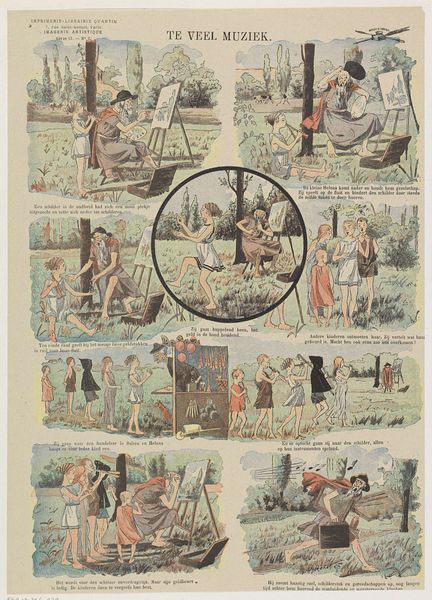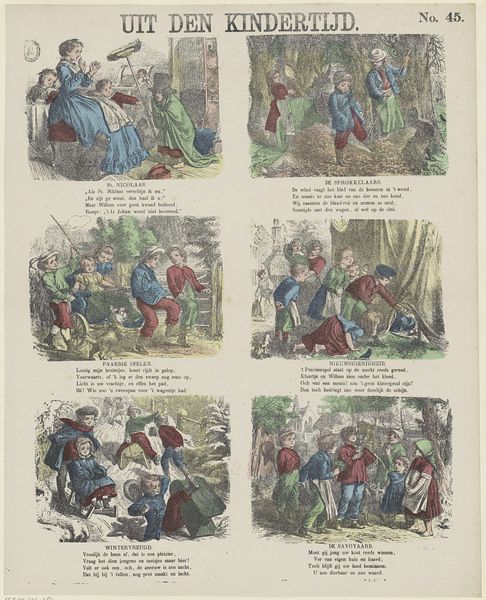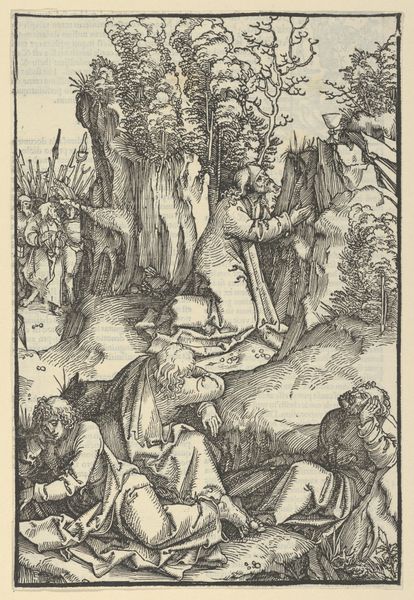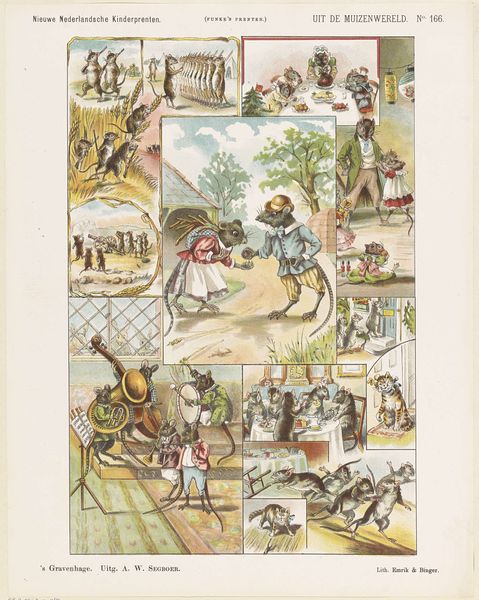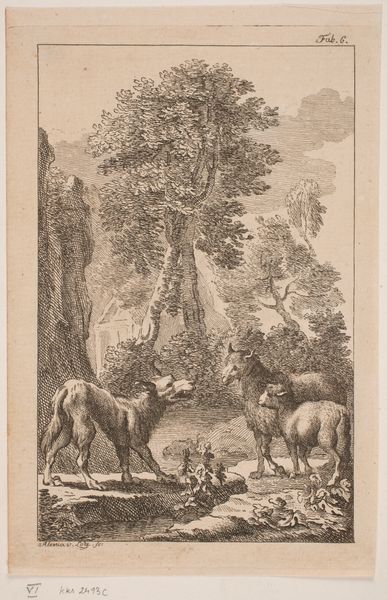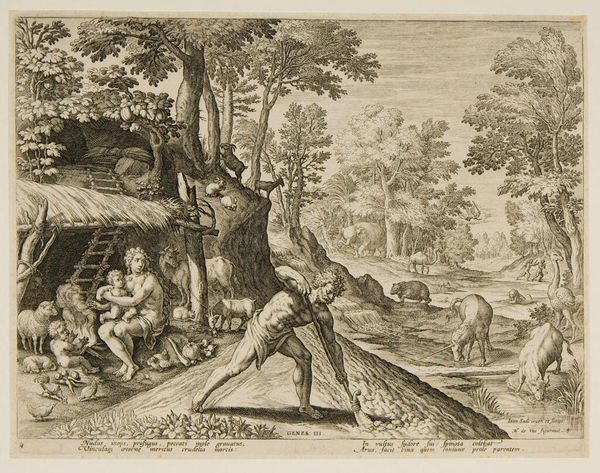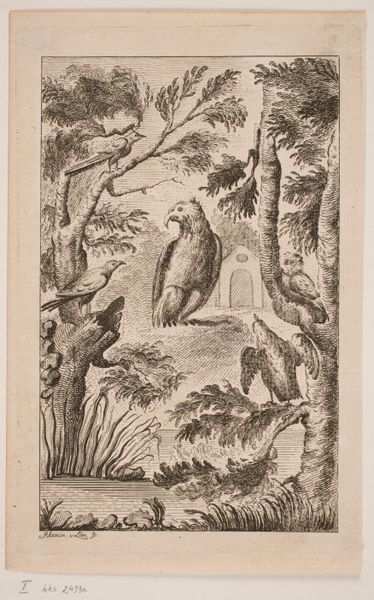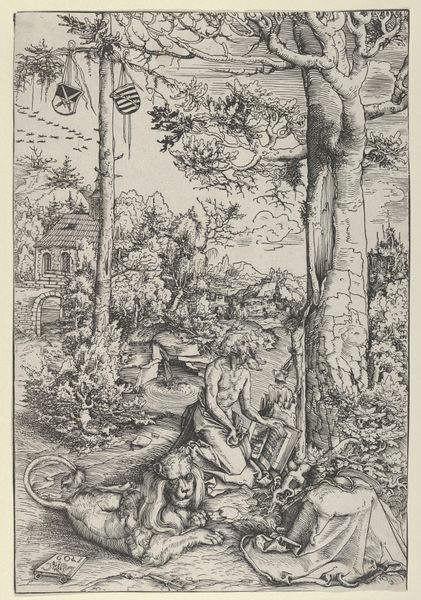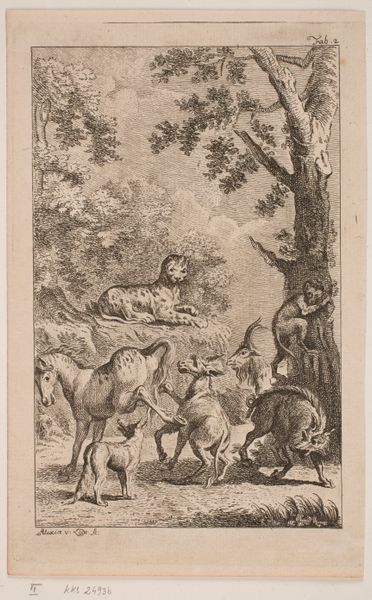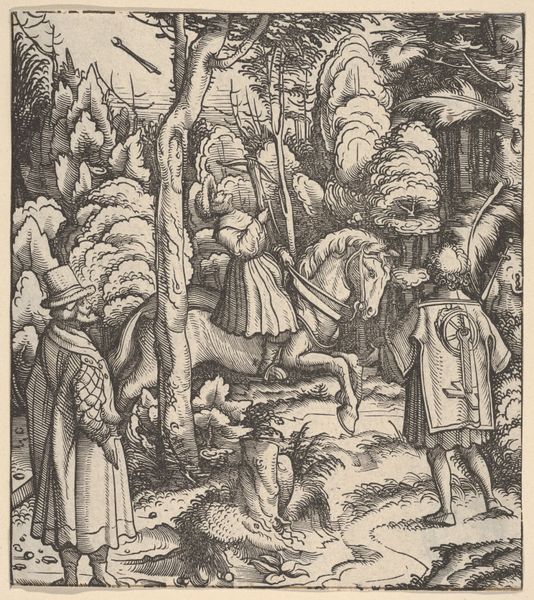
Dimensions: height 438 mm, width 347 mm
Copyright: Rijks Museum: Open Domain
Editor: Here we have "De reus Hapschraai" by Franz Graf von Pocci, made sometime between 1843 and 1920, using coloured pencil and watercolour. It's like a page out of a children's book, isn't it? The vignettes depict scenes of knights, dwarves, and castles...almost like panels in a comic. What symbols or stories do you think Pocci is trying to convey? Curator: What I see are layered archetypes that play upon collective cultural memory. Consider the knight: a symbol of bravery, sure, but also rigid order, clashing with the more fluid, chaotic realm of the forest inhabited by the gnome. Notice how the gnome is literally rooted to the tree? Trees represent knowledge and connection, so his laurel wreath suggests wisdom...perhaps challenging the knight's assumed authority. Do you see that castle perched on the hill, in contrast? Editor: Ah, the castle as another kind of established authority. I see what you mean about the contrast between the knight and the gnome, almost like opposing forces. And that connection to the forest and wisdom for the gnome is really thought provoking! Curator: These persistent images create continuity, spanning eras, cultures, and the individual psyche. Pocci isn’t merely illustrating a fairy tale. He is reminding us that these primordial dramas of order and chaos, wisdom and strength, still resonate. Are we brave like the knight? Or do we draw strength and knowledge from the earth like the gnome? What side are we on? Editor: So it's less about a specific story and more about the eternal, underlying themes? That really makes you think about your place within the grand scheme of these symbols. I had just viewed it as whimsical before! Curator: Exactly! Whimsical on the surface, deeply resonant beneath.
Comments
No comments
Be the first to comment and join the conversation on the ultimate creative platform.
